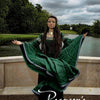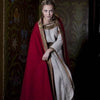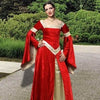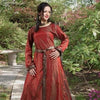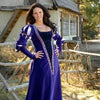Medieval Cloaks for Cold Weather

Whether you are into LARP or participate in Renaissance Faires, you know that when the weather gets cold, it can put a damper on the proceedings.. Many medieval costumes do not take cold weather in account, making many of them less than ideal to wear during the winter. The best way to fight the chilly weather is with layers and medieval cloaks.
Medieval cloaks are long garments that are made from warm, thick materials. Usually attaching at the neck, these cloaks are loose-fitting, making them ideal when you need to move briskly. Though cloaks have been around for centuries as a means of keeping arm, they are most often identified with medieval dress. Medieval cloaks can come with hoods for added warmth and protection from the elements. Perhaps the best part about medieval cloaks is their functionality. Unlike a long winter coat, cloaks allow you to move freely and are able to be removed in an instant, making them ideal for fighting or other intense activity during a LARP game or Renaissance Faire.
Wearing medieval cloaks can seem weird at first. In the modern world, coats are the standard cold-weather standby, and most coats differ wildly from cloaks. Medieval cloaks do not come with sleeves like winter coats, nor do they have zippers down the front. The good thing about cloaks is that, at the end of the day, the method of wearing a cloak comes down to personal preference. Like a long coat, you need to make sure the cloak isn’t too long. Otherwise, you may find yourself tripping over the bottom while walking or climbing stairs. This takes practice, but once you get the hang of it, the hardest obstacles of wearing a medieval cloak will be behind you.
When picking out a cloak for your medieval or Renaissance outfit, there are a few things to keep in the back of your mind. While you don’t want a cloak that is too long, you do want length. Long medieval cloaks can be much more flattering than cloaks that are too short. Boots are also a factor to consider. A pair of boots like our Maiden Thigh High Boots complements medieval cloaks well.
Make sure you take a look at our large selection of medieval cloaks, and feel free to email us if you have any questions or style tips!
Medieval cloaks are long garments that are made from warm, thick materials. Usually attaching at the neck, these cloaks are loose-fitting, making them ideal when you need to move briskly. Though cloaks have been around for centuries as a means of keeping arm, they are most often identified with medieval dress. Medieval cloaks can come with hoods for added warmth and protection from the elements. Perhaps the best part about medieval cloaks is their functionality. Unlike a long winter coat, cloaks allow you to move freely and are able to be removed in an instant, making them ideal for fighting or other intense activity during a LARP game or Renaissance Faire.
Wearing medieval cloaks can seem weird at first. In the modern world, coats are the standard cold-weather standby, and most coats differ wildly from cloaks. Medieval cloaks do not come with sleeves like winter coats, nor do they have zippers down the front. The good thing about cloaks is that, at the end of the day, the method of wearing a cloak comes down to personal preference. Like a long coat, you need to make sure the cloak isn’t too long. Otherwise, you may find yourself tripping over the bottom while walking or climbing stairs. This takes practice, but once you get the hang of it, the hardest obstacles of wearing a medieval cloak will be behind you.
When picking out a cloak for your medieval or Renaissance outfit, there are a few things to keep in the back of your mind. While you don’t want a cloak that is too long, you do want length. Long medieval cloaks can be much more flattering than cloaks that are too short. Boots are also a factor to consider. A pair of boots like our Maiden Thigh High Boots complements medieval cloaks well.
Make sure you take a look at our large selection of medieval cloaks, and feel free to email us if you have any questions or style tips!

